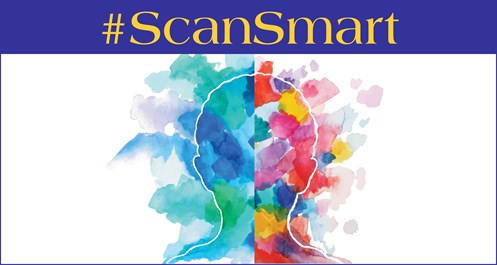
As young athletes head onto the football field or soccer pitch this fall, there’s greater awareness about the risk of concussions and other head injuries. In New Jersey hospitals and health systems, there’s also a growing discussion about using CT scans to assess those injuries in young athletes.
Medical professionals worry that overuse of these scans are exposing youngsters to a new risk – an increased potential for cancer due to radiation.
“Diagnostic radiation is very, very useful when used appropriately. But if it’s not used appropriately, it can be dangerous,” said Dr. Ernest Leva, an associate professor and director of the Division of Pediatric Emergency Medicine at Rutgers Robert Wood Johnson Medical School.
Dr. Leva is physician chair of the N.J. Council of Children’s Hospitals, which partnered with the Institute for Quality and Patient Safety at the New Jersey Hospital Association on a new pediatric safety initiative. The Safe CT Imaging Collaborative is working to standardize protocols for head CT scans in children and educate parents about the need to be smart about CT imaging.
“I’m a mom and I get it – when your child is hurt you want to leave no stone unturned to make sure everything is OK,” said Aline Holmes, RN, NJHA’s senior vice president of clinical affairs who holds a doctorate degree in nursing practice. “But not every head injury requires a CT scan, and in fact the radiation your child is exposed to could be a greater worry in the long run.”
The Collaborative was launched last fall, with 47 hospitals joining with the Council of Children’s Hospitals and the Hospital Improvement Innovation Network, led by NJHA. Data gathered from all 71 of the state’s acute care hospitals showed varying rates in the use of CT scans to diagnose head injuries. CT scans, or computed tomography, use ionizing radiation to take a picture of the brain. It’s a relatively small amount of radiation, but one CT scan equals approximately 200 chest X-rays, and that exposure can quickly add up over a child’s lifetime.
The collaborative’s first goal was to standardize protocols across New Jersey hospitals for head CT scans in children, not only the decision-making process on when a scan was warranted, but also the proper dosage levels for children. The collaborative adopted clinical observation criteria and an algorithm from the Pediatric Emergency Care Applied Research Network to define when imaging is medically warranted. NJHA created a laminated pocket card of the algorithm and shared it with emergency room physicians and nurses across the state. Collaborative members also joined with NJHA in a number of education programs on these industry best practices.
Twelve months later, new data shows that avoidable pediatric head CT scans decreased by 25 percent in New Jersey hospitals, translating to 956 unnecessary scans that were avoided.
Now entering its second year, the collaborative’s focus has shifted outside the hospitals’ walls into the community. A new #ScanSmart toolkit developed by NJHA and introduced this month helps healthcare providers educate parents, coaches, trainers and others with posters and pamphlets highlighting both the benefits and risks of CT imaging.
“Working together, informed healthcare consumers can partner with their medical professionals to do the right thing for their kids,” said Dr. Leva. “We encourage parents to talk with their children’s physicians about the COOL approach:
Consider using other testing (without radiation) when appropriate
Only image the indicated area
Only scan once
Lowest amount of radiation should be used, based on child dosing.”
The toolkit also is being distributed through other outreach partners, including the New Jersey chapter of the American Academy of Pediatricians. The #ScanSmart resources are available as free downloads on the NJHA Partnership for Patients website at /pfp/njtools/safe-ct-imaging/.